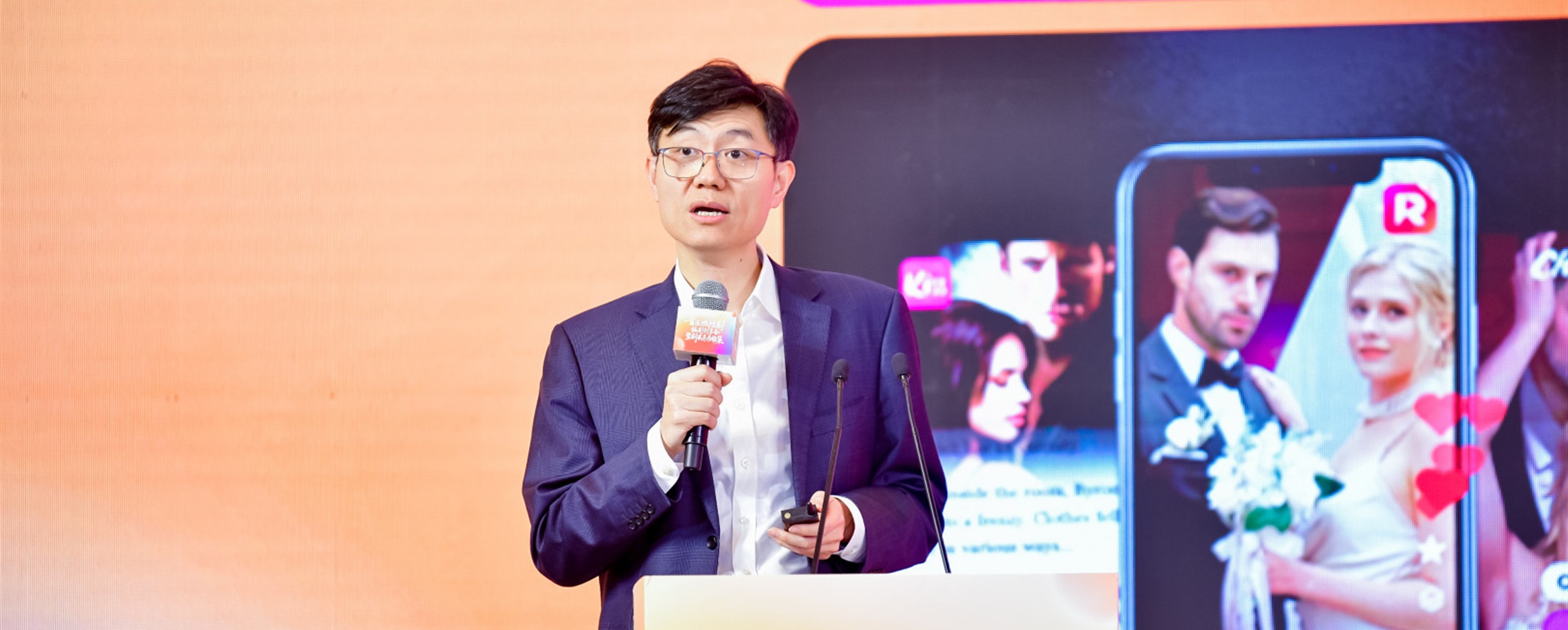【Hai Lights】Heritage theaters in Shanghai show off their modern, refreshed look
The long and glorious cinematic history and culture in Shanghai has nurtured a lot of iconic and heritage cinemas in the city in the past century.
For a long time, time-honored theaters such as the Cathay Theater and the Grand Theater has remained precious memories for old Shanghainese.
The time-honored buildings, after renovation and upgrades, still glitter as cultural landmarks of the city and new spaces for an artistic and fashionable lifestyle. Sitting inside these movie theaters feels like traveling back to the scenes of Hong Kong filmmaker Wong Kar-wai's classic works that also starred Shanghai as their backdrop.
In addition to heritage cinemas, the city also boasts the highest-level equipment and screening technologies at its modern theaters. Every year, around 50 cinemas are designated venues for the Shanghai International Film Festival's panoramic screenings, premieres and cultural events.
Online movie tickets to regular cinematic releases and the film festival's screenings can be purchased on Taopiaopiao and Maoyan. Movie buffs can also buy tickets at the theaters.
The following is a brief guide to famous heritage cinemas in the city.


Cathay Theater 国泰电影院
Located on Huaihai Road in Huangpu District, the Art Deco-style theater underwritten by the Cantonese cinema tycoon Lu Gen and designed by famous architect Charles Henry Gonda, opened on January 1, 1932.
Simultaneous screenings of first-run Hollywood and European movies such as "A Midsummer Night's Dream" and "The Great Waltz" were offered at that time, making the theater a popular entertainment venue for celebrities such as writer Eileen Chang and film stars Zhao Dan and Qin Yi.
Address: 870 Huaihai Rd M. 淮海中路870号
Tel: 5404-3415


After a renovation lasting one-and-a-half years, Cathay Theater retains its heritage decoration while the screening halls have been upgraded to guarantee an immersive audiovisual experience. The theater has also increased the number of barrier-free seats.
The multifunctional hall can host salons, lectures, and cultural activities. The open area on the left of the corridor introduces the SHALA restaurant, where visitors can enjoy coffee, cocktails, and Western cuisine.
The cinema is not far from Shanghai's fashion hub Xintiandi, and there are many small stores on the neighboring Nanchang Rd and Maoming Rd. It is an ideal area in which to stroll before or after your film viewing.

Grand Theater 大光明电影院
Designed by famed architect Laszlo Hudec in the 1930s, this relic of the city's glorious cinematic history is a witness to the flourishing of the film industry in China. With the Hollywood production "Hell Below" as the opening film, the Art Deco theater opened to the public in June 1933.
Since then, a lot of popular European and American productions have been shown at the cinema. It was also the first theater in the city to offer simultaneous translation for the screenings of foreign movies.



As the first widescreen cinema and the first stereo cinema in Asia, the Grand Theater is a cultural landmark of the city. With 1365 seats, the No. 1 screening hall of the theater is the largest film screening hall in Shanghai.
The renovation of the theater restored its architectural charm in the 1930s while it developed five small screening halls to cater for modern-day audience. A new highlight of the theater is the MIDNITE restaurant at the terrace. The restaurant is a fashionable space that combines dining with diverse and intelligent digital art.
The cinema, located in the area of People's Square is also very near to the Shanghai History Museum, the Shanghai Museum, the Shanghai Grand Theater and the Nanjing Nanjing Road Pedestrian Mall.
Address: 216 Nanjing Rd. W. 南京西路216号
Tel: 6327-4260


Victory Cinema 胜利电影院
Originally known as Hollywood Theater and Willie's Theater, the Victory Cinema was built by Zhang Zhibiao, father of famous Chinese magician Zhang Huichong in 1928.
Located at the junction of Zhapu Road and Haining Road, the three-storyed building has a unique Chinese classical revival style, and its most special feature is a tower on the roof that resembles the small temple which the Monkey King transforms into in "Journey to the West."
In the 1930s, Lu Xun, a leading figure in 20th-century Chinese literature went to the cinema six times to watch movies. After the founding of the People's Republic of China in 1949, the cinema was renamed Victory Cinema and it gradually became a venue for art film screenings.


A renovation of the cinema has brought new vitality to its business landscape. Some scenes in Hong Kong filmmaker Peter Chan's suspense crime film "She's Got No Name" were shot at the cinema. During the 25th Shanghai International Film Festival, Dior and VOGUE film also presented a special exhibition called "DIOR IN RED" at the cinema and premiered the short film "See."
The cinema is increasingly popular as a distinctive screening and exhibition space, where international filmmakers can gather and exchange film ideas in the Chinese-style tower. In the neighborhood, the 1933 Old Millfun is also worth visiting. The heritage building which used to be a slaughterhouse is now a creative hub that hosts workshops, studios, bars, and cafes.
Address: 408 Zhapu Rd 乍浦路408号
Tel: 182-0217-5889


Majestic Theater 美琪大戏院
Located at the intersection of Jiangning and Fengxian roads is the Majestic Theater. Formerly a luxury hotel, the Majestic opened to the public in October 1941 with a screening of the Hollywood musical film "Moon Over Miami." The opening day screening sold out and some of the profits were donated to the local school for blind children.
The theater, built in Art Deco style, began to show Chinese films in September of 1942. One of the hits at that time was "Spring," based on a novel by famous Chinese writer Ba Jin.
In November of 1945, Peking Opera master Mei Lanfang performed at the theater, marking his first return to the stage after the victory of the War of Resistance Against Japanese Aggression (1931-1945).


The theater is primarily used for cultural performances, but it is also one of the designated theaters for the annual Shanghai International Film Festival's panorama program. It also hosts exhibitions of film masters from across the world, film art lectures, and cultural salons for movie buffs.
The theater's location at the heart of Nanjing Rd. W. enables audiences to enjoy the modernity of the city as well as its time-honored architectures such as the historic Rong Villa, the former residence of flour and textiles tycoon Rong Zongjing on the neighboring Shaanxi Rd. N. Luxury brand Prada has rented the building as its offices and an artistic venue for exhibitions.
Address: 66 Jiangning Rd 江宁路66号
Tel: 6217-4409


Lyceum Theater 兰心大戏院
The theater, adjacent to the Garden Hotel Shanghai and the Jinjiang Hotel, opened to the public in February 1931 as a venue for performances by the Amateur Dramatic Club.
As one of the oldest theaters in the city, it was a gathering place for celebrities and consuls from various countries. After the founding of the People's Republic of China in 1949, major Chinese leaders and foreign heads of state visited the theater many times to enjoy performances.


In the 1980s and 1990s, it was still a comprehensive theater for both cultural performances and film screenings. Later, due to changes in positioning and equipment, movies were no longer shown at the theater.
The renovated theater has resumed its function of film screening. In June, it became one of the designated theaters for the Shanghai International Film Festival's panorama program for the first time.
It is pleasant to walk along Maoming Rd, where a few tailor-made boutiques are also located. The bustling Huaihai Road is very close to the theater.
Address: 57 Maoming Rd S. 茂名南路57号
Tel: 6217-8530
How to Buy Movie Tickets Using Alipay
Purchasing discounted movie tickets through Alipay is quick and easy. Just follow these steps:
1. Enable the Built-in Translation Tool:
- Open Alipay and go to Me > Settings > General > Translation Tool.
- Select your target language. (Currently, Alipay supports 15 languages, including Japanese, Portuguese, and Spanish.)
2. Search for Cinemas:
- On the home screen, use the search bar to type "Cinema."
- Browse and select the movie ticketing mini-program you prefer, then proceed to purchase tickets online.
- If the page is in Chinese, tap the floating Translation button to convert it into your selected language.
And that's it! Buying movie tickets has never been so simple. Try it out and enjoy the experience of booking like a local!




![[Quick News] YES, You Can Bring Your Pets to the Cinemas Now!](https://obj.shine.cn/files/2025/12/04/de999b69-a2e6-4d7a-8be7-be6f1a41ad05_0.jpg)
